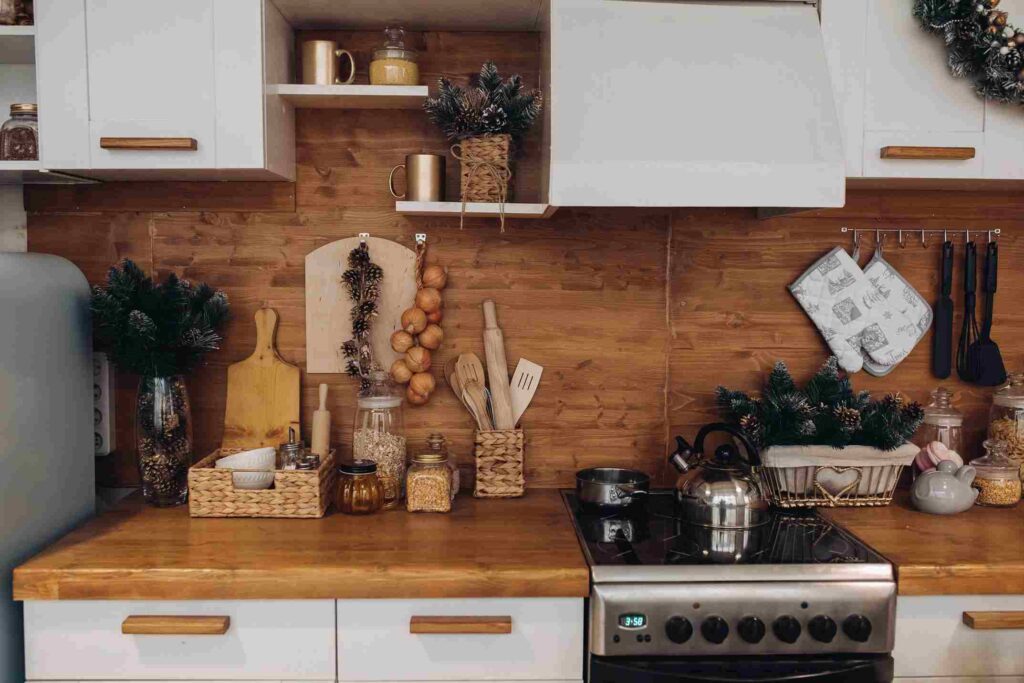
When preparing a rental property for tenants, landlords must make many important decisions, including whether or not to equip the property with white and brown goods.
Including white and brown goods can enhance your property’s appeal and enable you to ask for more in rent. However, it can also mean additional expenses and maintenance.
In this article, we’will explore white and brown goods and explain landlords’ responsibilities regarding these appliances. We hope our guide will help you make more informed decisions about which appliances to include in your rental property.
What are white and brown goods?
First, let’s define what white and brown goods are. White goods are large domestic appliances like:
- Cooker
- Fridge
- Freezer
- Washing machine
- Tumble dryer
- Dishwasher
Traditionally, most of these items are white because they are made with a white enamel coating – however, today, you can get them in all different colours and finishes!
Brown goods are smaller domestic appliances. Brown goods that are commonly found in rental properties include:
- Kettle
- Toaster
- Microwave
- Vacuum cleaner
- Television
Depending on who your target tenant is, tenants often already own brown goods but are less likely to own white goods.
What responsibilities do landlords have for white and brown goods?
Now that we understand what white and brown goods are, let’s learn what responsibilities landlords have regarding these appliances. The following responsibilities are legal obligations, so having a thorough understanding of them is crucial if you want to avoid being hit with a penalty.
Provide a cooker
Landlords are only required by law to equip a rental property with one appliance – and that’s a cooker.
The Housing Health and Safety Rating System (HHSRS) and the Homes (Fitness for Human Habitation) Act 2018 stipulate that landlords must provide tenants with the means to prepare food safely.
Therefore, you must provide either a cooker or a separate hob and oven.
Electrical safety
If you do choose to supply any electrical white or brown goods, you are responsible for ensuring they are safe and conform to the Electrical Equipment (Safety) Regulations 1994.
Electrical appliances are one of the top causes of house fires. According to electrical safety experts Electrical Safety First, over 20,000 accidental fires in the UK each year are caused by electricity. So, ensuring the safety of any electrical appliances you supply is of paramount importance to tenant safety and protecting your investment.
PAT testing
The easiest and most reliable way to check electrical appliance safety is to get PAT (portable appliance testing) tested regularly by a fully qualified electrical engineer. If you manage an HMO (house in multiple occupation) in England or Wales, check with your local council whether PAT testing is a legal requirement in your area. While it is not a legal requirement for every rental property, it is still a sensible precaution to take.
Gas appliances
If any of the appliances you supply are gas appliances, you are responsible for ensuring they have a gas safety check carried out by a registered GasSafe engineer every 12 months. You must also supply your tenant with the gas appliance’s user manual and the valid Gas Safety Certificate.
Pros and cons of providing tenants with white and brown goods
So, equipping your rental property with a cooker is non-negotiable, but what about the rest? Which other white and brown goods should you supply, if any? To help you decide, let’s look at some of the pros and cons of equipping your rental property with white and brown goods.
Pros
Generate demand: Providing appliances like a fridge, washing machine, and microwave can increase your property’s appeal and help generate more demand. It can be particularly appealing if you’re targeting students, young professionals, or low-income families who may not yet own these items. Equipping your rental property with all the essential appliances can help it stand out from other properties on the market.
Minimise void periods: If there is demand for your property, this will help you fill vacancies faster, minimising the time during which your property is void and helping to maintain a steady flow of rental income while reducing potential losses.
More satisfied tenants: Providing high-quality, essential appliances can significantly improve tenant satisfaction. This, in turn, could lead to lower tenant turnover and help boost your reputation as a landlord.
Cons
Additional expense: The initial cost of purchasing these appliances, along with ongoing expenses for repair, maintenance, and safety compliance, can add up.
Time commitment: Managing appliances involves dedicating time to time communicating with tenants about their maintenance needs and arranging repairs or replacements as needed.
Tenants may not want them: Some tenants may already own appliances. Providing white and brown goods may make your property less appealing to these people. You may also encounter tenants who request that you remove the appliances to make way for their own, which can be cumbersome as it means having to find storage solutions for these items.
Ultimately, it is important to think carefully about your target tenant demographic and their needs when deciding what white and brown goods to equip your rental property with.
Landlord obligations for white and brown goods in furnished vs. unfurnished properties
While there is no legal definition of a ‘furnished’ property, if you advertise your rental property as ‘furnished’, tenants will expect it to include all the essential white goods and probably some brown goods too. Let’s explore more about what appliances are generally expected in furnished vs. unfurnished rental properties.
Unfurnished properties
Landlords are typically only required to provide a cooker in an unfurnished property. However, it’s quite common for landlords to include some other essential white goods, like a fridge and washing machine. Ultimately, it’s up to you – the inclusion of these items is at the landlord’s discretion. Brown goods are not usually provided if a property is listed as unfurnished.
Furnished properties
In a furnished property, the extent of the furnishing – including the provision of white and brown goods- is determined by the landlord. You decide which white and brown goods you wish to equip the property with. However, just because you’ve supplied a washing machine and fridge, this doesn’t mean the property can now be advertised as furnished. Furnished properties usually include all the basic furniture a tenant requires to live comfortably, such as a bed, table and chairs, sofa, wardrobe, etc. The landlord may also choose to provide brown goods like a microwave, vacuum cleaner, toaster, and kettle.
Student accommodation
Most student accommodation is fully furnished with both white and brown goods, as it’s very uncommon for students living away from home for the first time to already own these items.
It’s essential that you clearly communicate with tenants during property viewings and within the tenancy agreement which white and brown goods are included and which are not.
Who is responsible for repairing and replacing white and brown goods in rental properties?
Appliances like white and brown goods don’t last forever and encounter faults and breakdowns over their lifetime. So, when things go wrong, who is responsible for repairing or replacing them- the landlord or the tenant? Let’s find out.
Let’s start with the cooker because this one is clean-cut. Because landlords are obligated to provide tenants with a cooker, if the cooker breaks down, then the landlord is responsible for getting it repaired or replaced as quickly as possible.
Aside from the cooker, a landlord’s responsibilities regarding the repair and replacement of white and brown goods are a little vague. Section 11 of the Landlord and Tenant Act 1985 sets out landlords’ obligations for repairs but does not mention white or brown goods.
So, if you are supplying white or brown goods, you should specify within the tenancy agreement who is responsible for repairing or replacing them if they go wrong to provide both parties with clarity about their responsibilities.
However, practically speaking, if a landlord supplies appliances like a refrigerator, it is generally expected that they will replace or repair the item if it breaks down. Providing this level of service not only meets reasonable tenant expectations but also supports a positive landlord-tenant relationship
Tips and advice for managing white and brown goods within a rental property
Developing a strategy for managing white and brown goods in your buy-to-let helps ensure safety, compliance, and tenant satisfaction. We’ve put together some key tips for handling white and brown goods efficiently in a rental property.
Clarify in the tenancy agreement—The tenancy agreement should clarify which white and brown goods are provided and who is responsible for maintaining, repairing, and replacing these appliances.
Provide user manuals—Tenants should be provided with user manuals for all appliances. Manuals can equip tenants with important information about how to use and maintain the appliances safely and effectively, helping to prevent misuse and extend the lifespan of the appliances provided.
Arrange regular PAT testing – Arrange regular PAT testing to ensure electrical appliances are safe to use. This is essential for tenant safety and compliance with electrical regulations.
Take out extended warranties – Invest in extended warranties beyond the standard 12-month period. Invest in a two or five-year warranty that covers parts and labour to protect against the cost of repairing or replacing the appliance if it breaks down.
Landlord insurance cover—Consider taking out white goods cover as part of your landlord insurance policy. This can provide peace of mind and financial protection against unexpected appliance breakdowns.
Check the condition of appliances during property inspections – During property inspections, check appliances for signs of wear, damage, or faulty wiring. Look for frayed, loose, or broken wiring and check the overall condition of appliances for signs of damage. Don’t forget to ask tenants if they’ve had any problems with appliances too.
Keep an inventory—Keep a detailed inventory that includes photos of the condition of all appliances on the tenant’s move-in date, purchase dates, and warranty and PAT testing expiry dates.
Set yourself reminders—Be organised about maintaining and managing your rental property’s appliances. Set reminders for when warranties are nearing expiration and when appliances are due for PAT testing or servicing.
Buy new, not second-hand—While it may be tempting to buy white and brown goods second-hand, it’s safest to buy new. While there’s no problem buying a dining table and chairs second-hand, an electrical item is more likely to be faulty or damaged if it has already been used.
Pay attention to item recalls – Stay informed about product recalls. If an item is recalled, replace it immediately, as it could be a safety hazard.
When considering which white and brown goods to include in your rental property, your decision should be guided by your target tenant demographic and the competitive landscape of the rental market. Depending on your target demographic, the inclusion of essential white goods, in particular, can increase your rental’s value and boost its appeal. However, if you do decide to include white and brown goods, it’s important to take a proactive approach to managing them to maintain tenant satisfaction and safety.



